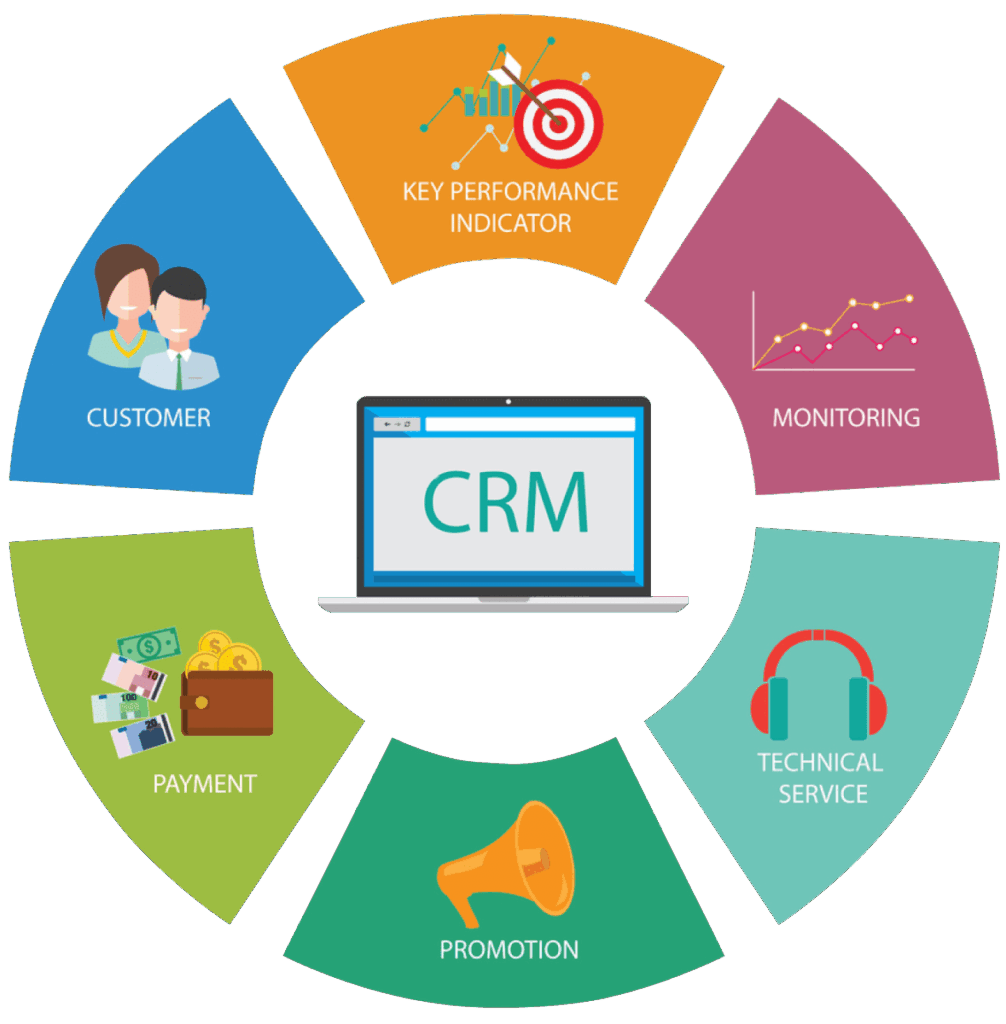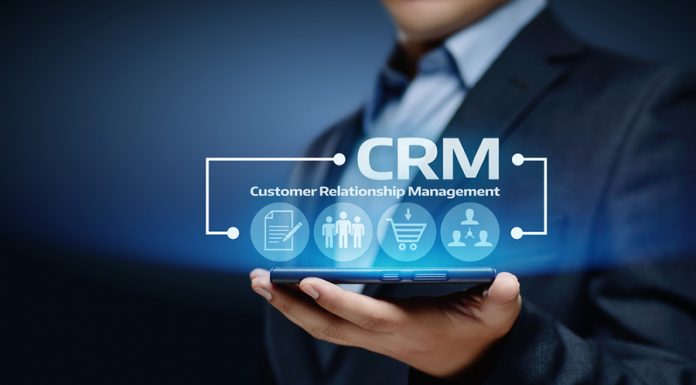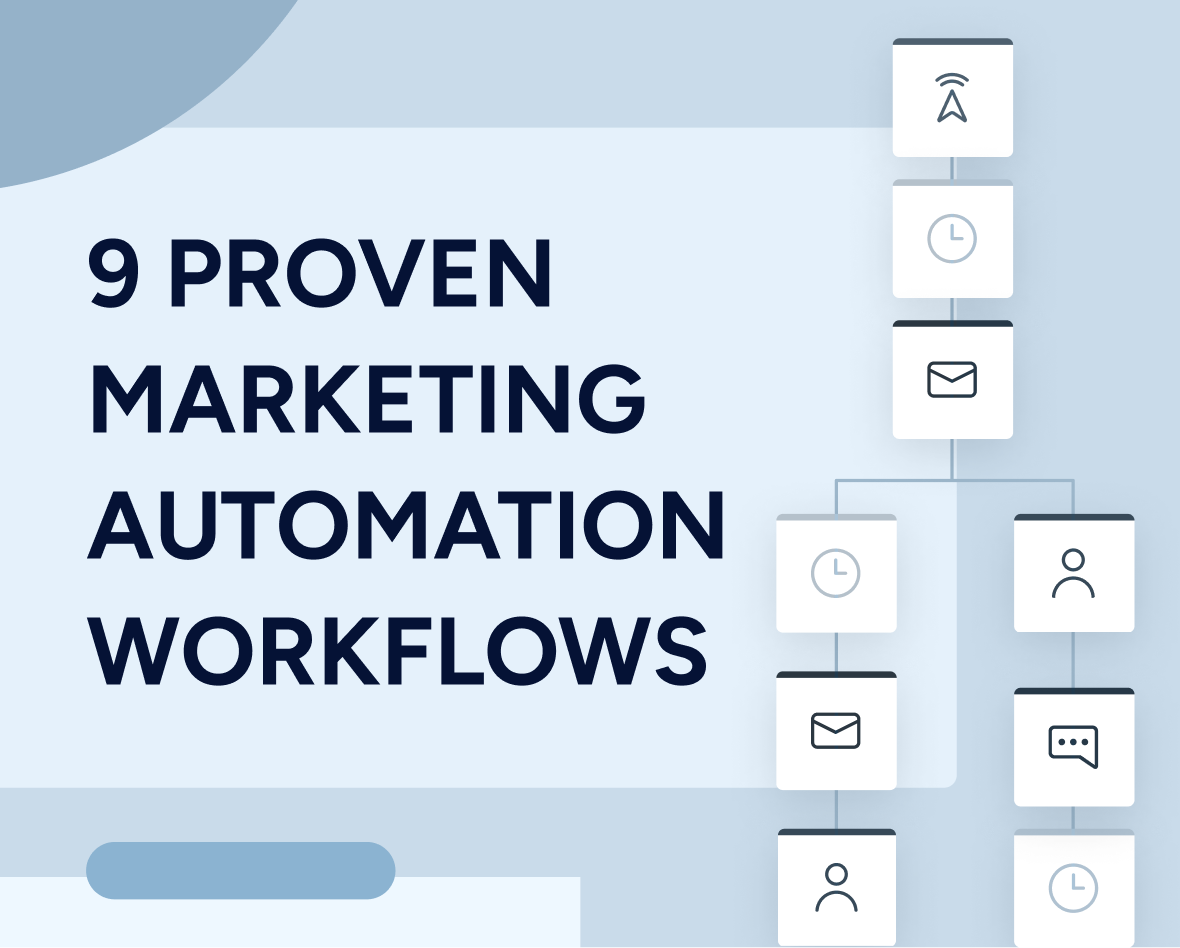
Introduction: Revolutionizing Marketing with CRM Workflows
In today’s fast-paced digital landscape, marketing isn’t just about broadcasting messages; it’s about building meaningful relationships. And in the heart of this relationship-driven approach lies the Customer Relationship Management (CRM) system. But a CRM is more than just a database; it’s a powerful engine when coupled with well-designed workflows. This comprehensive guide delves deep into the world of CRM marketing workflows, exploring how they can transform your marketing efforts, boost efficiency, and drive substantial business growth. We’ll cover everything from the fundamental principles to advanced automation techniques, equipping you with the knowledge and tools to craft workflows that truly resonate with your audience.
Understanding the Core Concepts: What is a CRM Marketing Workflow?
At its core, a CRM marketing workflow is a sequence of automated actions triggered by specific events or conditions within your CRM system. Think of it as a pre-planned journey for your customer, designed to guide them through the sales funnel, nurture their interest, and ultimately convert them into loyal customers. These workflows streamline your marketing processes, ensuring that the right message reaches the right person at the right time, without manual intervention. They are the backbone of efficient and effective marketing, allowing you to scale your efforts while maintaining a personalized touch.
Key Components of a CRM Marketing Workflow:
- Triggers: These are the events that initiate a workflow. Examples include a new lead submission, a website visit, a product purchase, or a specific date.
- Conditions: These are the criteria that determine whether a specific action is taken. Conditions allow you to segment your audience and tailor your messaging.
- Actions: These are the tasks performed within the workflow, such as sending an email, updating a contact record, assigning a task, or adding a tag.
- Sequences: A series of actions that occur in a specific order, often over a period of time.
By understanding these components, you can begin to visualize how a workflow functions and how it can be customized to meet your specific marketing objectives.
The Benefits of Implementing CRM Marketing Workflows
The advantages of integrating CRM marketing workflows are numerous and impactful. They touch every aspect of your marketing strategy, from lead generation to customer retention. Let’s explore some of the most significant benefits:
1. Enhanced Efficiency and Productivity
One of the primary advantages of workflows is the significant boost in efficiency. By automating repetitive tasks, your marketing team can free up valuable time and resources, allowing them to focus on more strategic initiatives. No more manually sending emails, updating contact records, or assigning tasks. Workflows handle these tasks automatically, reducing the risk of human error and ensuring consistency across all your marketing activities.
2. Improved Lead Nurturing and Conversion Rates
Workflows are exceptionally effective at nurturing leads through the sales funnel. By crafting targeted sequences of emails, personalized content, and timely follow-ups, you can keep leads engaged and move them closer to a purchase decision. This personalized approach significantly increases conversion rates, turning prospects into paying customers.
3. Increased Customer Engagement and Loyalty
Beyond lead nurturing, workflows play a crucial role in fostering customer engagement and loyalty. By sending personalized messages, offering exclusive deals, and providing timely support, you can build stronger relationships with your customers. This, in turn, leads to increased customer lifetime value and a higher rate of repeat business.
4. Data-Driven Decision Making
CRM systems provide a wealth of data, and workflows allow you to leverage this data to make informed decisions. By tracking the performance of your workflows, you can identify what’s working and what’s not, enabling you to optimize your campaigns and improve your overall marketing ROI. This data-driven approach ensures that your marketing efforts are always aligned with your business goals.
5. Seamless Integration and Scalability
Most CRM systems integrate seamlessly with other marketing tools, such as email marketing platforms, social media management tools, and analytics dashboards. This integration allows you to create comprehensive workflows that span across multiple channels. As your business grows, workflows can be easily scaled to accommodate new leads, customers, and marketing initiatives.
Building Effective CRM Marketing Workflows: A Step-by-Step Guide
Creating effective CRM marketing workflows requires a strategic approach. Here’s a step-by-step guide to help you get started:
Step 1: Define Your Goals and Objectives
Before you begin building any workflows, it’s crucial to clearly define your goals and objectives. What do you want to achieve with your workflows? Are you trying to generate more leads, increase conversion rates, or improve customer retention? Having clear goals will guide your workflow design and help you measure its success. Consider using the SMART framework (Specific, Measurable, Achievable, Relevant, Time-bound) to define your objectives.
Step 2: Identify Your Target Audience
Understanding your target audience is essential for creating personalized and relevant workflows. Create buyer personas to represent different segments of your audience. Consider their demographics, interests, behaviors, and pain points. This understanding will help you tailor your messaging and actions to resonate with each segment.
Step 3: Map Out the Customer Journey
Visualize the customer journey from the initial touchpoint to becoming a loyal customer. Map out the different stages of the journey, including awareness, consideration, decision, and retention. Identify the key interactions and touchpoints at each stage. This will help you determine the triggers, conditions, and actions needed for each workflow.
Step 4: Choose the Right Triggers
Triggers are the starting point of your workflows. Select triggers that align with your goals and the customer journey. Common triggers include:
- Lead Submission: When a new lead submits a form on your website.
- Website Visit: When a contact visits a specific page on your website.
- Product Purchase: When a customer makes a purchase.
- Date-Based: Based on a specific date, such as a birthday or anniversary.
- Contact Segmentation: Based on contact properties, like lead source or job title.
Step 5: Set the Conditions
Conditions allow you to segment your audience and personalize your messaging. Use conditions to filter contacts based on their demographics, interests, behaviors, or any other relevant data. This ensures that the right message reaches the right person. For example, you might use a condition to send a specific email to leads who have expressed interest in a particular product.
Step 6: Design the Actions
Actions are the tasks performed within the workflow. Design actions that align with your goals and the customer journey. Common actions include:
- Sending Emails: Sending welcome emails, nurturing emails, promotional emails, etc.
- Updating Contact Records: Updating contact information, adding tags, or changing lead status.
- Assigning Tasks: Assigning tasks to sales representatives or other team members.
- Sending SMS Messages: Sending text messages for reminders or promotions.
- Adding/Removing Tags: Tagging contacts for segmentation and personalization.
Step 7: Create Sequences
Sequences are a series of actions that occur in a specific order, often over a period of time. Use sequences to nurture leads, onboard new customers, and provide ongoing support. For example, a lead nurturing sequence might include a series of emails designed to educate leads about your products or services and move them closer to a purchase decision.
Step 8: Test and Optimize
Once your workflows are created, it’s essential to test them thoroughly before launching them. Test different variations of your emails, subject lines, and calls to action to see what resonates best with your audience. Continuously monitor the performance of your workflows and make adjustments as needed. Use A/B testing to compare different versions of your emails and landing pages. Analyze your data to identify areas for improvement and optimize your workflows for maximum effectiveness.
Workflow Examples: Real-World Applications
To illustrate the power of CRM marketing workflows, let’s explore some real-world examples:
1. Lead Nurturing Workflow
Trigger: A new lead submits a form on your website.
Actions:
- Send a welcome email with a lead magnet (e.g., an ebook or whitepaper).
- Add the lead to a lead nurturing sequence.
- After 3 days, send a follow-up email with more information about your products or services.
- After 7 days, send a case study or testimonial.
- If the lead hasn’t responded, send a final email with a special offer.
- If the lead clicks on a link in any of the emails, assign them to a sales representative.
This workflow helps nurture leads, build relationships, and ultimately convert them into customers.
2. Customer Onboarding Workflow
Trigger: A new customer makes a purchase.
Actions:
- Send a welcome email with a thank-you message and instructions on how to get started.
- Add the customer to an onboarding sequence.
- After 1 day, send an email with tips and best practices.
- After 3 days, send a survey to gather feedback.
- After 7 days, offer a discount on a related product.
This workflow ensures a smooth onboarding experience and sets the stage for long-term customer loyalty.
3. Abandoned Cart Workflow
Trigger: A customer adds items to their cart but doesn’t complete the purchase.
Actions:
- After 1 hour, send an email reminding the customer of the items in their cart.
- After 24 hours, send a follow-up email with a special offer (e.g., free shipping).
- After 48 hours, send a final email with a limited-time discount.
This workflow helps recover lost sales and increase revenue.
4. Customer Retention Workflow
Trigger: A customer’s subscription is about to expire.
Actions:
- Send an email reminding the customer of their upcoming renewal.
- Offer a discount or incentive to encourage renewal.
- If the customer renews, send a thank-you email.
- If the customer doesn’t renew, send a final email asking for feedback.
This workflow helps reduce customer churn and increase customer lifetime value.
Advanced CRM Marketing Workflow Techniques
Once you’ve mastered the basics, you can explore more advanced techniques to further optimize your workflows:
1. Segmentation and Personalization
Segmentation is the key to personalization. Use conditions to segment your audience based on various criteria, such as demographics, interests, behaviors, and purchase history. Then, tailor your messaging and actions to resonate with each segment. Personalization makes your marketing more relevant and effective, leading to higher engagement and conversion rates.
2. Dynamic Content
Dynamic content allows you to personalize your emails and landing pages even further. Use merge tags and conditional logic to display different content based on a contact’s information or behavior. For example, you can use dynamic content to display a customer’s name, their recent purchases, or a personalized product recommendation.
3. A/B Testing
A/B testing is essential for optimizing your workflows. Test different variations of your emails, subject lines, calls to action, and landing pages to see what resonates best with your audience. Analyze the results of your tests and make adjustments to improve your performance. Continuously test and refine your workflows to maximize their effectiveness.
4. Multi-Channel Workflows
Don’t limit your workflows to email. Integrate other channels, such as SMS messaging, social media, and website pop-ups, to create a more comprehensive and engaging customer experience. Multi-channel workflows allow you to reach your audience on their preferred channels and provide a more seamless and consistent experience.
5. Integration with Third-Party Tools
Integrate your CRM with other marketing tools, such as email marketing platforms, social media management tools, and analytics dashboards. This integration allows you to create more powerful and sophisticated workflows. For example, you can use your CRM to trigger automated social media posts or to track the performance of your campaigns across multiple channels.
Choosing the Right CRM for Your Marketing Workflow Needs
Selecting the right CRM is a crucial decision. The best CRM for you will depend on your specific needs, budget, and technical expertise. Here are some key factors to consider when choosing a CRM:
1. Features and Functionality
Make sure the CRM offers the features and functionality you need, such as lead management, contact management, email marketing, sales automation, and reporting. Consider whether the CRM integrates with other tools you use, such as your website, e-commerce platform, and social media channels.
2. Ease of Use
Choose a CRM that’s easy to use and navigate. The interface should be intuitive, and the system should be easy to set up and manage. Consider whether the CRM offers training and support to help you get started.
3. Scalability
As your business grows, your CRM needs to be able to scale with you. Choose a CRM that can handle a growing number of contacts, transactions, and marketing campaigns. Consider whether the CRM offers different pricing plans to accommodate your changing needs.
4. Integration Capabilities
Ensure the CRM integrates with other tools you use, such as your email marketing platform, social media management tools, and analytics dashboards. Integration will allow you to create more comprehensive and automated workflows.
5. Pricing and Budget
Consider your budget and choose a CRM that fits your needs. CRM pricing can vary widely, from free plans to enterprise-level solutions. Factor in the cost of implementation, training, and ongoing support.
Some popular CRM platforms include:
- HubSpot CRM: A popular, free CRM with robust marketing automation features.
- Salesforce Sales Cloud: A comprehensive CRM solution for businesses of all sizes.
- Zoho CRM: A feature-rich CRM with affordable pricing plans.
- Pipedrive: A sales-focused CRM with a user-friendly interface.
- ActiveCampaign: A powerful marketing automation platform with CRM capabilities.
Best Practices for CRM Marketing Workflow Success
To maximize the effectiveness of your CRM marketing workflows, consider these best practices:
1. Start Simple
Don’t try to do too much too soon. Start with a few simple workflows and gradually add more as you gain experience. Focus on automating the most important tasks first.
2. Document Your Workflows
Document your workflows, including the triggers, conditions, actions, and sequences. This will help you understand how your workflows function and make it easier to troubleshoot any issues. Documentation also makes it easier for new team members to learn about your workflows.
3. Monitor and Analyze Your Results
Regularly monitor the performance of your workflows and analyze the results. Track key metrics, such as open rates, click-through rates, conversion rates, and customer lifetime value. Use this data to identify areas for improvement and optimize your workflows.
4. Keep Your Data Clean
Ensure that your CRM data is clean and accurate. Regularly review and update your contact records. Use data validation tools to prevent errors. Clean data is essential for effective segmentation and personalization.
5. Stay Up-to-Date
The marketing landscape is constantly evolving. Stay up-to-date on the latest trends and best practices in CRM marketing workflows. Attend webinars, read industry blogs, and experiment with new techniques. Continuous learning will help you maximize the effectiveness of your workflows.
Conclusion: Unleashing the Power of CRM Marketing Workflows
CRM marketing workflows are a game-changer for businesses looking to enhance their marketing efforts, boost efficiency, and drive growth. By automating repetitive tasks, personalizing your messaging, and nurturing leads through the sales funnel, you can build stronger relationships with your customers and achieve significant results. Embrace the power of workflows, and watch your marketing efforts transform. Remember to start with a clear understanding of your goals, target audience, and the customer journey. Choose the right CRM, implement best practices, and continuously monitor and optimize your workflows for maximum impact. With the right strategy and execution, CRM marketing workflows can become the engine that drives your marketing success.

